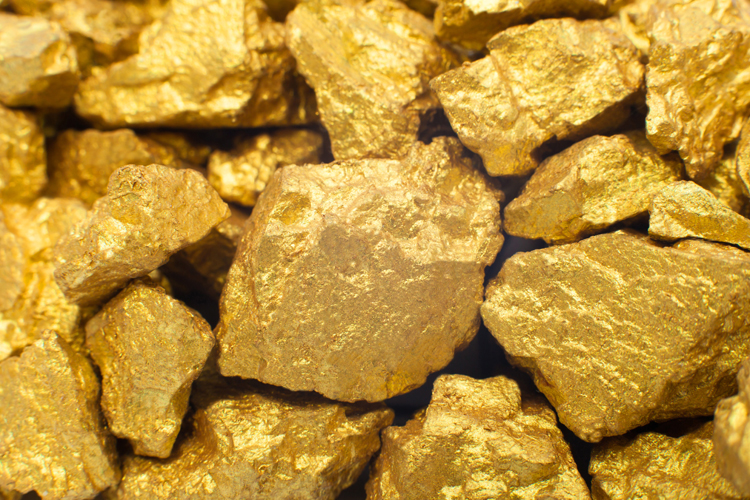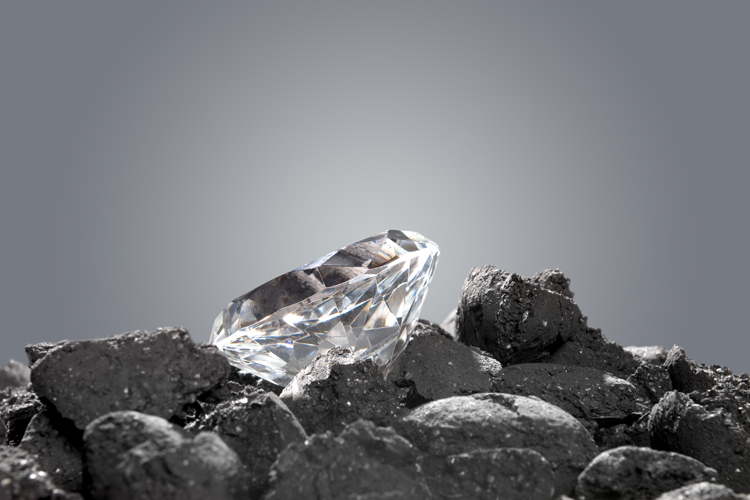Gold is a fascinating and versatile metal with a rich history and myriad applications, and it has been admired, sought after, and revered for thousands of years.
This shiny, malleable, and non-tarnishing yellowish metal has captured the hearts and minds of people from ancient times to the present day.
From its use in jewelry and currency to its role in electronics, medicine, and space exploration, gold continues to captivate and inspire.
These 100 golden nuggets offer just a glimpse into the intriguing world of this precious metal, which has been an object of desire and admiration for thousands of years.
- Gold is a chemical element with the symbol Au (from the Latin word aurum) and atomic number 79.
- The term ‘gold’ comes from the Old English word geolu, meaning yellow.
- Gold is considered a transition metal in the periodic table.
- The melting point of gold is 1,064 degrees Celsius (1,947 degrees Fahrenheit).
- The boiling point of gold is 2,970 degrees Celsius (5,378 degrees Fahrenheit).
- Gold is a soft, malleable metal, making it easy to work with for jewelry and other decorative items.
- Gold is a noble metal, meaning it is resistant to corrosion and oxidation.
- It is an excellent conductor of electricity and heat.
- Gold is found on every continent on Earth.
- South Africa has the world’s largest known gold reserves, followed by Australia and Russia.
- Gold is often found in quartz veins and alluvial deposits.
- The Witwatersrand Basin in South Africa has produced more gold than any other region in the world.
- The California Gold Rush began in 1848 and attracted over 300,000 prospectors to the area.
- The Gold Standard was a monetary system where a country’s currency was directly linked to gold.
- The United States abandoned the Gold Standard in 1971.
- The first documented discovery of gold in the United States was at the Reed Gold Mine in North Carolina in 1799.
- Gold is a highly valued metal in electronics due to its conductivity and resistance to corrosion.
- Gold is used in dentistry because it is biocompatible and resistant to bacteria.
- The precious metal is used in the aerospace industry for its electrical conductivity and corrosion resistance.
- Gold is a popular choice for wedding rings and other jewelry.
- It is edible and is used in some gourmet dishes as a decorative element.
- The world’s largest gold bar weighs 250 kilograms (551 pounds) and is held at the Toi Gold Museum in Japan.
- The purity of gold is measured in karats, with 24 karats being pure gold.
- Gold can be alloyed with other metals, such as silver or copper, to create different colors and properties.
- White gold is an alloy of gold and a white metal, such as palladium or nickel.
- The ISO currency code for gold is XAU.
- The price of gold is often considered a safe-haven investment during times of economic uncertainty.
- Gold has been used as a form of currency for thousands of years.
- The Aztecs and Incas referred to gold as the “sweat of the sun.”
- The Ancient Egyptians believed gold was the skin of the gods and used it to decorate tombs and temples.
- Tutankhamun’s death mask, discovered in 1922, is made of solid gold.
- The Romans used gold to create coins and decorative items.
- Gold leaf can be as thin as 0.1 microns, making it translucent.
- Gold is considered a symbol of wealth, power, and status.
- The world’s largest gold coin is the Australian Kangaroo One Tonne Gold Coin, weighing 1,000 kilograms (2,204 pounds).
- The 1933 Double Eagle gold coin is one of the rarest and most valuable coins in the world, with one selling for $18.9 million in 2021.
- The Fort Knox Bullion Depository in the United States holds a large portion of the country’s gold reserves.
- The International Monetary Fund (IMF) is one of the largest holders of gold in the world.
- Gold is sometimes found as nuggets or flakes in rivers, where it has been eroded from rock formations.
- It is often recovered as a byproduct of mining other metals, such as copper or silver.
- Gold nanoparticles have applications in medicine, including cancer treatment and drug delivery.
- Gold is used in the manufacturing of space suits due to its ability to reflect infrared radiation.
- The world’s deepest gold mine is the Mponeng Gold Mine in South Africa, reaching depths of over 4 kilometers (2.5 miles).
- Gold has been discovered in seawater, but the concentration is so low that it is not currently economically viable to extract.
- The largest single mass of gold ever found is the “Welcome Stranger” nugget, discovered in Australia in 1869, weighing 72 kilograms (158 pounds).
- The Olympic gold medals are made of at least 92.5% silver and plated with a minimum of 6 grams of gold.
- The Nobel Prize medals are made of 18-karat green gold plated with 24-karat gold.
- The Royal Canadian Mint produced the world’s first 99.999% pure gold bullion coin in 1998.
- Gold is used in glassmaking to create red and yellow colors.
- It is so malleable that one ounce of the metal can be hammered into a sheet covering 300 square feet.
- Gold is a good reflector of electromagnetic radiation, such as radio waves and infrared.
- The visors on astronauts’ helmets are coated with a thin layer of gold to protect their eyes from harmful solar radiation.
- Gold can be made into thread for embroidery and textiles.
- In 2010, China surpassed South Africa as the world’s largest gold producer.
- The use of gold as a decorative material dates back to at least 4000 BC.
- The Lydians, an ancient civilization in modern-day Turkey, are credited with producing the first gold coins around 700 BC.
- The Incas called gold “tears of the sun” and believed it held spiritual value.
- Alchemy, a proto-scientific and philosophical tradition, sought to turn base metals into gold.
- The legendary city of El Dorado was said to be rich in gold, leading to numerous expeditions in search of it.
- Gold is unaffected by most acids, but it can dissolve in aqua regia, a mixture of nitric acid and hydrochloric acid.
- The world’s largest gold crystal was discovered in Venezuela and is approximately half the size of a golf ball.
- Gold is used in some smartphones and other electronic devices due to its excellent conductivity.
- The London Bullion Market Association (LBMA) is responsible for overseeing the global gold market.
- Gold is sometimes used as a catalyst in chemical reactions.
- Gold is a good reflector of neutrons and is used in some nuclear reactor control rods.
- The reddish-yellow metal is used in some automotive applications, such as in engine control modules and airbag deployment systems.
- Gold is used in the manufacturing of some aircraft, particularly in electrical and electronic systems.
- Gold leaf has been used to decorate buildings and monuments, such as the dome of the United States Capitol building.
- The bright and soft metal is biocompatible, meaning it is not toxic to living organisms, which is why it is used in medical implants and certain medical treatments.
- Gold is often associated with luxury and exclusivity, and it is used to plate high-end items, such as watches and smartphones.
- The Indian wedding season is known to increase the demand for gold, as it is an important element of Indian bridal jewelry.
- The tradition of giving gold coins as gifts during holidays, such as Diwali and Lunar New Year, contributes to the demand for gold.
- Gold has been used as a pigment in art and illuminated manuscripts since ancient times.
- The Golden Ratio, a mathematical concept, has been used in art and architecture for centuries and is believed to create aesthetically pleasing proportions.
- Gold is associated with several myths and legends, such as King Midas, who was said to have the ability to turn anything he touched into gold.
- Gold is mentioned several times in religious texts, such as the Bible and the Quran.
- The Federal Reserve Bank of New York holds gold reserves for many countries, with the vault containing approximately 7,000 tons of gold.
- Gold is used in some high-end audio equipment due to its excellent electrical conductivity.
- Gold is used in some cancer treatments, such as gold nanoparticle-assisted radiotherapy, which helps to increase the effectiveness of radiation treatment.
- The golden metal is used in some luxury skincare products due to its purported anti-aging and rejuvenating properties.
- Gold has a specific gravity of 19.3, making it one of the densest elements.
- It is found in trace amounts in the human body, but its function is not well understood.
- Gold is used in some religious artifacts and icons due to its symbolic importance and long-lasting properties.
- The malleable and dense metal is used in some high-performance window coatings to help regulate temperature and reduce energy consumption.
- Gold is used in some spacecraft to protect electronic components from radiation.
- Gold has been used in some military applications, such as in guidance systems and communications equipment.
- It is sometimes used in restorative dentistry due to its malleability, biocompatibility, and durability.
- Gold is used in some alternative medicine practices, such as Ayurveda, for its purported healing properties.
- Gold is a relatively rare element in the Earth’s crust, with an estimated concentration of 0.005 parts per million.
- It has been used in photography as a toner to create more stable, long-lasting prints.
- Gold is used in some computer components, such as connectors and memory chips, due to its excellent conductivity and resistance to corrosion.
- Gold is employed in some anti-counterfeiting measures, such as in banknotes and passports, due to its unique properties and high value.
- It is applied in some radiation shielding materials, such as in the protective aprons worn by medical professionals during X-ray procedures.
- Gold is used in some fuel cell technologies, such as in catalysts for hydrogen production.
- Gold has been used in some glassmaking techniques, such as in stained glass windows, to create vibrant colors.
- It is associated with several cultural and religious celebrations, such as Christmas and Hanukkah, where it is used as a symbol of wealth and prosperity.
- Gold is used in some high-end fashion items, such as in embroidery and accessories, to create a luxurious appearance.
- Gold is utilized in some scientific instruments, such as electron microscopes and atomic force microscopes, due to its unique properties and stability.
- It is used in some conservation efforts, such as in the restoration of historic artifacts and paintings, due to its long-lasting properties and resistance to corrosion.
- Gold is used in some awards and trophies, such as the Oscars and the FIFA World Cup, to symbolize achievement and prestige.




